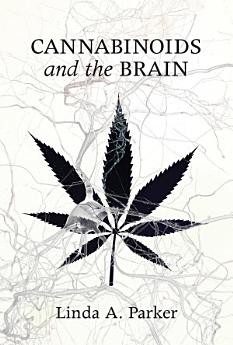Cannabinoids and the Brain
জানু ২০১৭ · MIT Press
ইবুক
248
পৃষ্ঠা
family_home
যোগ্য
info
reportমূল্যাংকন আৰু পৰ্যালোচনা সত্যাপন কৰা হোৱা নাই অধিক জানক
এই ইবুকখনৰ বিষয়ে
A review of the scientific evidence on the effects of cannabinoids on brain and behavioral functioning, with an emphasis on potential therapeutic use.
The cannabis plant has been used for recreational and medicinal purposes for more than 4,000 years, but the scientific investigation into its effects has only recently yielded useful results. In this book, Linda Parker offers a review of the scientific evidence on the effects of cannabinoids on brain and behavioral functioning, with an emphasis on potential therapeutic uses.
Parker describes the discovery of tetrahydocannbinol (THC), the main psychoactive component of cannabis, and the further discovery of cannabinoid receptors in the brain. She explains that the brain produces chemicals similar to THC, which act on the same receptors as THC, and shows that the endocannabinoid system is involved in all aspects of brain functioning. Parker reports that cannabis contains not only the psychoactive compound THC, but also other compounds of potential therapeutic benefit, and that one of them, cannabidiol (CBD), shows promise for the treatment of pain, anxiety, and epilepsy. Parker reviews the evidence on cannabinoids and anxiety, depression, mood, sleep, schizophrenia, learning and memory, addiction, sex, appetite and obesity, chemotherapy-induced nausea, epilepsy, and such neurodegenerative disorders as multiple sclerosis and Alzheimer's Disease. Each chapter also links the scientific evidence to historical and anecdotal reports of the medicinal use of cannabis.
As debate about the medical use of marijuana continues, Parker's balanced and objective review of the fundamental science and potential therapeutic effects of cannabis is especially timely.
The cannabis plant has been used for recreational and medicinal purposes for more than 4,000 years, but the scientific investigation into its effects has only recently yielded useful results. In this book, Linda Parker offers a review of the scientific evidence on the effects of cannabinoids on brain and behavioral functioning, with an emphasis on potential therapeutic uses.
Parker describes the discovery of tetrahydocannbinol (THC), the main psychoactive component of cannabis, and the further discovery of cannabinoid receptors in the brain. She explains that the brain produces chemicals similar to THC, which act on the same receptors as THC, and shows that the endocannabinoid system is involved in all aspects of brain functioning. Parker reports that cannabis contains not only the psychoactive compound THC, but also other compounds of potential therapeutic benefit, and that one of them, cannabidiol (CBD), shows promise for the treatment of pain, anxiety, and epilepsy. Parker reviews the evidence on cannabinoids and anxiety, depression, mood, sleep, schizophrenia, learning and memory, addiction, sex, appetite and obesity, chemotherapy-induced nausea, epilepsy, and such neurodegenerative disorders as multiple sclerosis and Alzheimer's Disease. Each chapter also links the scientific evidence to historical and anecdotal reports of the medicinal use of cannabis.
As debate about the medical use of marijuana continues, Parker's balanced and objective review of the fundamental science and potential therapeutic effects of cannabis is especially timely.
লিখকৰ বিষয়ে
Linda A. Parker is Professor in the Psychology and Collaborative Neuroscience Program and Canada Research Chair in Behavioural Neuroscience at the University of Guelph. She was the 2016 recipient of the Lifetime Achievement Award from the International Cannabinoid Research Society and is currently President of the Canadian Consortium for Investigation of Cannabinoids.
এই ইবুকখনক মূল্যাংকন কৰক
আমাক আপোনাৰ মতামত জনাওক।
পঢ়াৰ নির্দেশাৱলী
স্মাৰ্টফ’ন আৰু টেবলেট
Android আৰু iPad/iPhoneৰ বাবে Google Play Books এপটো ইনষ্টল কৰক। ই স্বয়ংক্রিয়ভাৱে আপোনাৰ একাউণ্টৰ সৈতে ছিংক হয় আৰু আপুনি য'তে নাথাকক ত'তেই কোনো অডিঅ'বুক অনলাইন বা অফলাইনত শুনিবলৈ সুবিধা দিয়ে।
লেপটপ আৰু কম্পিউটাৰ
আপুনি কম্পিউটাৰৰ ৱেব ব্রাউজাৰ ব্যৱহাৰ কৰি Google Playত কিনা অডিঅ'বুকসমূহ শুনিব পাৰে।
ই-ৰীডাৰ আৰু অন্য ডিভাইচ
Kobo eReadersৰ দৰে ই-চিয়াঁহীৰ ডিভাইচসমূহত পঢ়িবলৈ, আপুনি এটা ফাইল ডাউনল’ড কৰি সেইটো আপোনাৰ ডিভাইচলৈ স্থানান্তৰণ কৰিব লাগিব। সমৰ্থিত ই-ৰিডাৰলৈ ফাইলটো কেনেকৈ স্থানান্তৰ কৰিব জানিবলৈ সহায় কেন্দ্ৰত থকা সবিশেষ নিৰ্দেশাৱলী চাওক।




